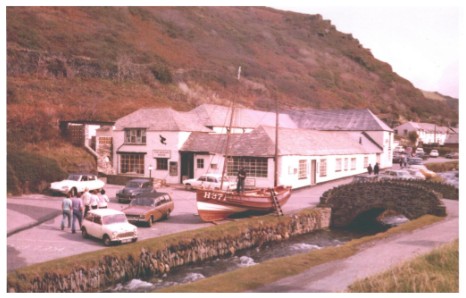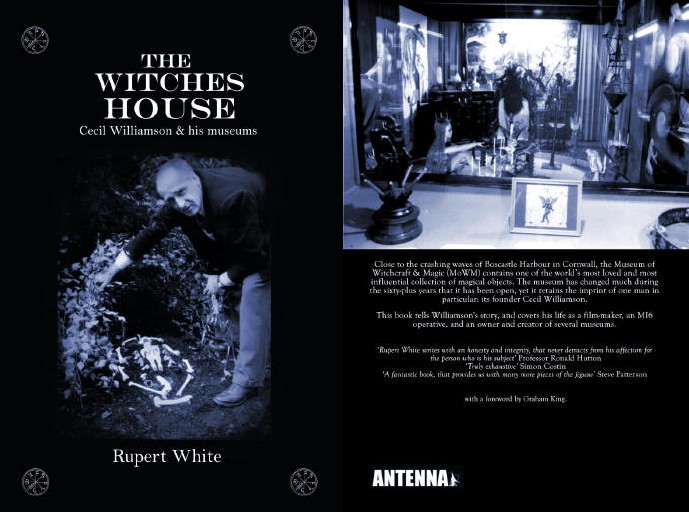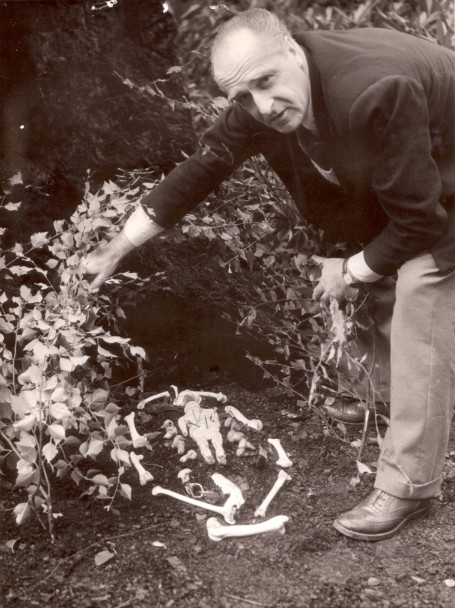The Witches’ House – Cecil Williamson & his museums
Rupert White
Foreword by Graham King.
Antenna Publications, April 2025, pages: 300 (approx.) Paperback ISBN 9798313403335 Price: £14.00 (UK), £ 16 (Europe), £18 (elsewhere)
In The Witches’ House, Rupert White presents a meticulously researched and richly illustrated study of one of the most enigmatic and influential figures in the history of modern witchcraft and magical heritage in Britain: Cecil Williamson. As the founder of the Museum of Witchcraft and Magic, Williamson’s life and legacy are central to any serious exploration of how folk magic, witchcraft, and rural spirituality have been collected, interpreted, and displayed in the 20th century.
White has drawn on a trove of primary sources — including Williamson’s unpublished writings, private correspondence, interviews, and rare photographs — to construct a compelling and often surprising biography. The result is not merely the story of a man, but of a cultural moment: the evolution of esoteric belief, folklore, and public perception from the interwar period to the edge of the 21st century.
Williamson’s multifaceted character is explored in depth. He appears as a folklorist, covert operative, showman, and solitary magical practitioner, often ahead of his time and occasionally at odds with the growing formalisation of modern witchcraft movements. His nuanced — and sometimes contradictory — views on magic, religion, and authenticity are presented without judgment, allowing readers to encounter the complexities of a man both passionate and paradoxical.
The book’s structure is thematic, supported by a generous selection of images and excerpts from archival documents. White’s prose is careful and grounded, allowing the source material to take precedence. For scholars of esotericism, folklore, or museum studies, The Witches’ House offers a vital contribution to understanding not only Williamson’s life but also the shifting representations of witchcraft in the public sphere.
That said, the book assumes a degree of familiarity with the landscape of British esotericism and may at times challenge the general reader with its detail and specificity. I was at times reminded of Philip Heselton’s style of writing, often meandering off in detail. Nevertheless, it remains accessible to anyone with a serious interest in the subject and is particularly valuable for researchers, curators, and practitioners seeking to understand the roots of contemporary magical heritage work.

“Eventually, Cecil settled in the Cornish village of Boscastle and opened the Museum of Witchcraft in 1960. The Museum Boscastle Harbour in 1962”
In sum, Rupert White has done the academic and esoteric communities a great service in preserving and presenting the story of Cecil Williamson with such care and integrity. The Witches’ House stands as a definitive resource and a fitting tribute to a man whose museums invited thousands to engage with the hidden histories of magic and belief.
Highly recommended!
References:
Note: I couldn’t find a table of contents, which I found slightly annoying, so please use the Index. When looking up ‘Gardner, Gerald’, for example, there are many references… but you have to know what to look for… 🙂
Images of Cecil Williamson and the Museum Boscastle Harbour – https://museumofwitchcraftandmagic.co.uk/history/


